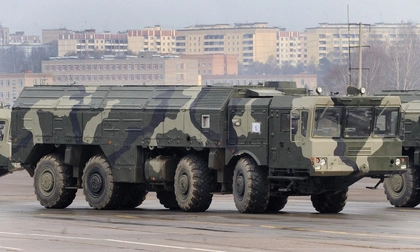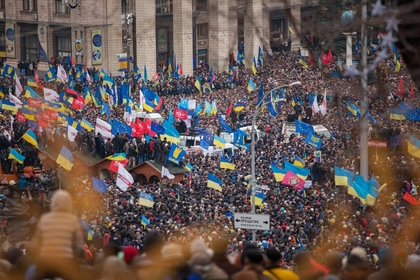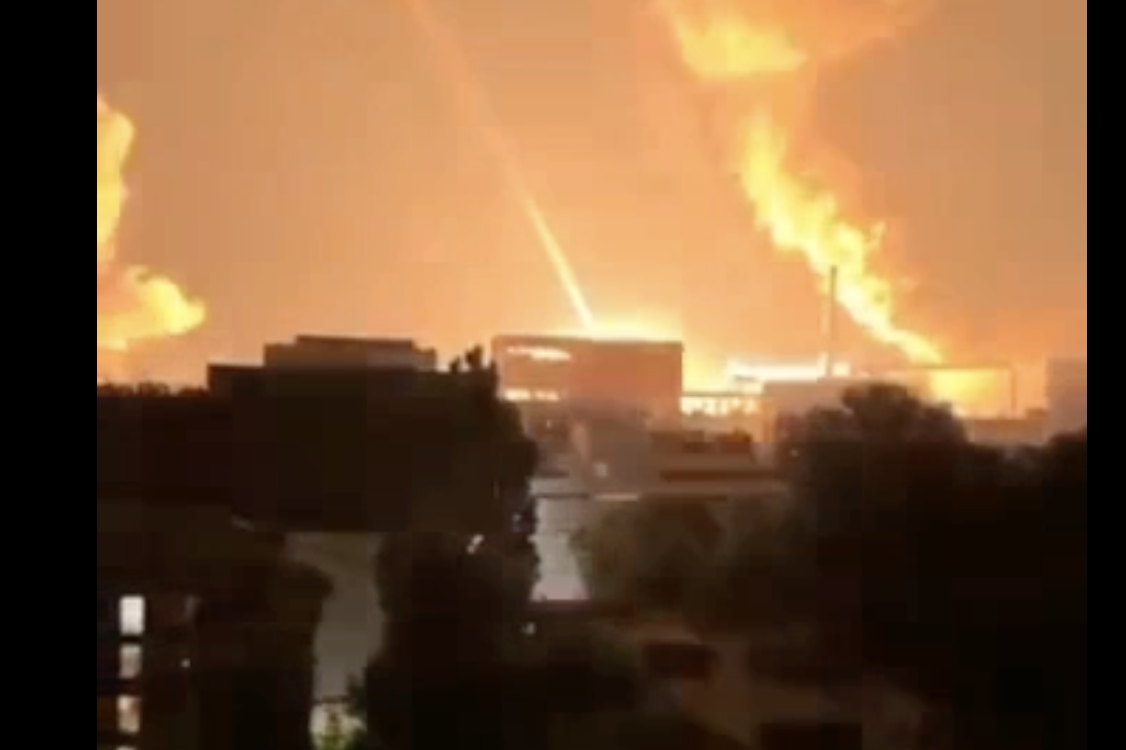Kherson is a major regional center and gateway to the southern regions of Ukraine, located near the very mouth of the Dnipro River. With a population of more than 300,000 people before the full-scale invasion, it was the only regional center that the Russian army was able to capture.
Under pressure from Ukrainian forces with constant shelling of bridges across the Dnipro River in its rear, the Russian army left the settlements of the region one by one. Finally, in November 2022, they left Kherson itself – an important victory for Ukraine.
JOIN US ON TELEGRAM
Follow our coverage of the war on the @Kyivpost_official.
Yet Russian troops have been able to maintain a foothold on the opposite bank of the Dnipro, a few kilometers from Kherson. Since then, they have been shelling the city with all types of artillery and bombing it with aircraft for a year and a half. Kyiv Post visited the city on the front line to see how people manage to survive amid constant shelling.
Entering Kherson today provides a stark contrast with what was here before the full-scale invasion – there are far fewer people on the streets and fewer cars.
This is not surprising. Enemy shelling is frequent. The city is often hit by multiple-launch rocket systems. The night before we arrived, the Russians destroyed a large store for building materials. It happened at night, so luckily no one was killed. But not everyone is so fortunate. In the city and region, there are wounded and dead almost every day.

Russia Boosts Missile Production, Stockpiles At Least 1,500 for Ukraine Strikes
The problem is that the city is close to the front line, and unlike other cities deeper in the rear, enemy artillery is within reach, with only a few seconds’ warning before impact.
Anastasia Rybalchenko, a volunteer who helps displaced people from the occupied territories, says that this is a new reality in which you can die at any moment.
“It’s hard to live under fire because one moment you’re there, and the next you’re not, and there’s no protection. In more distant cities you at least have some time to hide in shelters before the rocket arrives. There’s no such thing here… Sometimes, we pass through a village, and then they call us – and three shells have already arrived there,” Rybalchenko says.
The most difficult job is for local rescuers. One of them, major Ivan Havryliak, tells us that several of his colleagues have been killed recently, and dozens have been injured.
“Everyone is scared, but people need to be helped. So we try to find a middle ground when we know there may be a second ‘double-tap’ attack. We monitor the situation, and if necessary, we take people away from this place for a few minutes. If the shelling has passed, then we come back and extinguish further. There could be a lull during the day – but this is not every day – it all depends on the weather. If it’s a little overcast, as it is now, then drones won’t fly. There are still attacks, but not as often. Shelling often starts in the evening and can last all night,” the rescuer said.
According to him, artillery strikes cause extremely heavy destruction, and there are a lot of them. He sees no logic in the shelling of Kherson’s residential areas by Russian artillery, which hits inaccurately.
“This is to terrorize the civilian population, I believe... 3-4-5-6 houses can burn at the same time. Well, human grief, it’s hard. There are significantly more wounded, and they often have to be pulled out. When shells fall, they break down windows, and doors are blocked because of the explosion, so we need to get people out of their apartments... The most difficult thing is to see all this – human grief, suffering, destruction. This is my hometown, and it is being wiped off the face of the Earth,” rescurer said.
The sounds of incoming shells are heard constantly, although they are far away, where you can’t see the destruction. This is extremely unnerving. I don’t want to move around the city without a bulletproof vest. But Kherson residents are no longer afraid of this – they calmly walk the streets and go on public transport.
It seems strange, but according to journalist Serhiy Nikitenko, a native of Kherson who knows everything about the city, it’s a way to overcome stress and adapt.
“All 60,000 people currently in Kherson simply cannot wear a bulletproof vest. People get used to everything.”
“Aren’t you afraid of what might come?”
“It’s scary, but you get used to; it’s a matter of habit,” Nikitenko told.
Russian propaganda constantly claims that the chaotic shooting in the city is an attack on military facilities. But Nikitenko, who sees everything with his own eyes, believes that it’s more out of spite – the Russians simply cannot allow Kherson to flourish after its liberation and are doing everything to make the residents leave.
“I think it’s resentment against the Kherson residents who didn’t accept the occupiers, who didn’t love them. So a peaceful and prosperous Kherson would be all the more of a failure for them,” Nikitenko said.
Nevertheless, people come back. Some are tired of living in other people’s apartments, some are worried about their property here, and some simply do not want to leave their city.
“In January 2023, after the de-occupation of the city, there were very few people, no one on the streets, but now there are people on the streets, people are returning. Because their houses are here, their property, they don’t have to pay rent as they would elsewhere. And the farther you go, the more it costs,” the journalist said.
These residents of Kherson refuse to succumb to Russian terror. Not only are they returning to the city, but they are also reviving their businesses or opening new ones. For example, Oleksander Vlasov put his bakery back in order, where he makes everything – delicious and fast.
“Here, we have a bakery in this hall. We make pizzas, burgers, croissants, everything from ‘Savych’ hot dogs, Kyiv hot dogs that were delivered to us in Kherson, croissants with ham filling, redfish, chicken, bread, 15 types. Before the big war started, we had up to five locations – a family business, the first open-type bakery. There were two on the Left Bank – Oleshky and Kopani. When the war started, we closed on the Left Bank and took out the equipment,” Vlasov said.
People like it here. Visitors say this is an opportunity to forget that you live on the front line.
“I love pizza very much, and I love it because you can order not only a whole one, as if at home, but a slice for breakfast or lunch. Still, it’s scary when there’s a loud boom nearby. You shudder,” Larysa said.
Here they’ve mastered not only European but also Asian cuisine. The man who skillfully wraps sushi before our eyes says that he’s happy he can calm people down at least a little amid the shelling.
“It’s scary, but what is the alternative? The boys in the trenches have it even scarier! And we just feed people, bring them a little happiness,” Artem said.
The staff is philosophical about the attacks. Vlasov shows us the wreckage that reached the bakery.
The shells hit very close, in the neighboring yard. But by Kherson standards, the neighboring yard is already far away.
“This area didn’t get hit, almost nothing landed at this intersection. It landed at the next house, fragments flew toward us, but not directly here,” Vlasov said.
To secure the city, it’s necessary to drive Russian troops away from the banks of the Dnipro. In general, the prospects of the city now, while the Russian army occupies the opposite bank, look very bleak. Large factories and shopping centers were destroyed. Car dealerships have been empty since the occupation, and no one wants to drive cars to the front line.
The port in the main part of Kherson doesn’t work because it’s located right in the line of fire. The city has wrecked gas stations and many damaged houses. But those who stay in Kherson refuse to be refugees.
“I want to work in Kherson. This is my city, I like it. I came back here from abroad after the start of the full-scale war. I came back to do my service here,” the rescuer said.
“In three years, everybody wants to live life as they live now in Kyiv or Lviv. People are very tired mentally, it’s hard to deal with, but for now, we’re holding on,” Rybalchenko told.
“I built it all together with my wife, opened it with my own hands. There was grass here, we did everything from scratch, and I can’t leave. It’s against my principles,” Vlasov said.
You can also highlight the text and press Ctrl + Enter


















